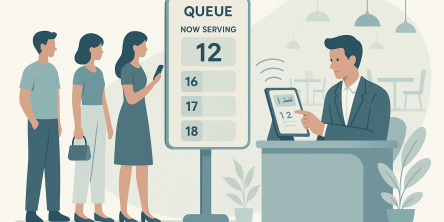How Will IoT Change the Data World?

How Will IoT Change the Data World? There is a rise of a new breed of electronic devices called smart products. Smart devices are no longer only confined to mobile phones. Smart device applications and their uses have spread to every device you can imagine. Any room in a house can be connected to the Internet of Things (IoT). But, what does that mean to the world? How will it affect big data and its uses? Here are a few things you can expect in the years to come so you are ready to adapt.
What is a Smart Home Product?
A smart home product is any device that can be installed in a home that also connects to the internet. This technology is called the Internet of Things (IoT). Smart home products can connect to other smart devices. This enables the user to track, monitor, and control any smart device remotely. About 76% of smart home products are currently controlled through apps on smartphones. This helps a user to create new ways of home automation by connecting and interchanging information between different smart devices.
What is IoT?
The Internet of Things is not so much a product or a tangible thing that can be pointed out. It is the collective word for the following processes:
- Smart devices connect to the internet.
- Information is shared with authorized partners.
- That information is stored and accessed by authorized entities. IoT is basically a global network of smart devices. Hundreds of zettabytes of information travel over this network. To give you an idea, one zettabyte is the same as a billion terabytes.
What to Expect for IoT and Marketing?
Experts from SafeAtLast claim that it’s no longer business as usual. Every industry is experiencing change caused by IoT technology. From manufacturing to service delivery and even healthcare benefits from this technology. But what will the marketing world experience? With this new wave of information available. How will it affect advertising? Here a few things that you can expect.
New Devices and Inventions
Inventors have always looked to fulfill a need. Some inventions may have been stumbled upon accidentally. But, its use was always purposed to fulfill a need. The rise of IoT will cause new needs to develop. These needs will most definitely be serviced by new products and inventions. Look at smart displays for instance. Smart home products can be hard to track, monitor, and control without a centralized hub. In steps the smart display. It acts like a central hub from which you can control every smart home product in your home. Just so will inventors find new needs to satisfy with original products and services in the years to come.
Contextual Marketing Will be Revolutionized by IoT Data
Modern day marketing can jokingly be referred to as a light form of stalking. Marketing companies want to know as much about the market as legally possible. Information about the market will help advertisers to create better marketing campaigns. IoT data is harvested from billions of products from across the globe. New types of information are available to marketing companies. Information about the smallest details about customer behavior is now available. The type of marketing materials developed by agencies will also change. Campaigns should from now on also be compatible with small screens of smart products. Grocery stores should, for instance, be able to target the screens of smart refrigerators.
IoT Data is the Precious Metals of the Digital World
IoT data is to a certain extent being mined, processed, refined, and stored. This data can help you to make extremely informed decisions. It will definitely help companies to increase productivity. Manufacturing companies can track and monitor every step of their value chains in real time. This can help to improve key performance indicators like productivity. This will eventually lead to higher profitability for a company. Forecasting, budgeting, and other planning related activities will be much more accurate due to this information. All of these benefits will surely lead to high demand for this type of information. And like anything else in life, a higher demand drives a higher price. IoT data will be relatively expensive.
Advertising Agencies Will Create More Service
Marketing agencies are predominantly concerned with helping brands carve out a marketing strategy. It includes things like brand strategy development, brand look development, market identification, product development ideas, digital marketing, and many more. But IoT data will help companies to make market specific decisions. Advertising agencies need to incorporate IoT data extraction and interpretation into their services. The interpretation of IoT information will help companies to make educated decisions based on real market statistics. Actuaries may soon be knocking on the doors of marketing agencies.
Customer Specific Marketing Campaigns
Add-blocking services and apps were created to keep malicious content off the screens of its users. But, it has another added benefit. It keeps irrelevant marketing from spamming you into madness. Irrelevant marketing wastes money on monumental scales. An add directed to someone outside of the target market is money wasted. Marketers are dying to know where their target markets are. It’s much easier to market a product if you know where to do it. IoT technology will track a user almost everywhere they go. It is easier then to form a data-driven relationship with a customer. Here is the process in which IoT technology helps to tailor better campaigns for the target market of a product.
Data-Driven Relationships Process:
1. More connected devices 2. Leads to more information 3. Leads to smarter data 4. Leads relevant campaigns 5. Leads to increased customer engagement Knowing the whereabouts of a customer can help to pin-point smarter and more focused marketing efforts. Customer engagement and conversion will be much better because of IoT data.
Data Privacy and Related Issues
Private information is a sensitive resource. Data privacy and protection will become an even more contentious issue in the years to come. Companies and governments across the world will have to invest in proper protection and encryption of information. Encryption and protection isn’t the only issue. The sharing of information will also be a problem. Certain governments and countries have already placed censorships on national internet grids. IoT based technologies may be hampered in these countries. The full extent of these implications will only be revealed in time. Speaking about the sharing of information. The collaboration of information over IoT technology has already seen its first issue with sharing. The smart product giant Google (owner of Google Home) has already refused any Amazon smart home products from accessing its entertainment platform YouTube. This is just the first example of the unwillingness of large businesses to share information. We may see more instances in the future, especially from sites like Facebook or Pinterest where there are increasingly large numbers of followers..
How Will Marketing Companies Use IoT?
We’ve looked at what we can expect from the future. But, what does that mean for today? How will marketing companies use IoT to do the jobs they have been employed for.
Analyze Customer Behavior Across Different Platforms
IoT information makes it possible for marketers to track and monitor their customers on various platforms. This will help to reveal certain customer behaviors. They will be able to target the specific buying habits of customers for specific devices. Marketing efforts will be much more precise to increase customer engagement and ultimately sales as well.
Harvest Information Previously Unavailable
All kinds of smart devices will connect to the internet. These devices are found right across the homes of users. The application of these devices differ. So the type of information acquired by each product will differ. A smart refrigerator can, for instance, say how many times it has been opened and closed per month. That may not sound like useful information now but marketing gurus probably have some use for it. All kinds of information that once was unobtainable are now available.
More Precise Information About Customer Lifecycle Stages
Advertisers want to know where in the customer lifecycle the target market is. The customer lifecycle has the following steps that repeat:
- Awareness
- Research
- Comparison
- Purchase
- Retention
These stages are used to build a brand following. Different customers are at different stages. And only if the marketer knows where customers find themselves is it possible to supply the necessary solutions. IoT data may be able to reveal to advertisers at which stage a customer is. That will help companies to build bigger followings by servicing the needs of customers with greater ease.
Enhance Customer Relations and Resolve Issues
IoT technology has narrowed the information gap between the customer and the company. Customers will be able to log issues or calls straight from the device itself. Just so will the company be able to contact the customer if any manufacturing issues are brought to the attention of the manufacturer. Product recall marketing expenses may be able to be lowered. Customers with the affected models will be contacted directly on the device that contains the error.
How Will IoT Affect the Retail Industry?
The retail industry is currently suffering because of the boom in online shopping. But, IoT may have some hope to add to the situation. The retail world will be revolutionized by IoT technology. Here are some of the ways in which IoT will change the face of retail.
Automatic Checkout Systems
Stores with the right technology will offer automatic check out points. Products will have tags that communicate with sensors. The customer will shop as usual, but without having to queue at a check out point. Customers with automatic check out options enabled will simply walk out of the store with their cart of goods. Sensors will tally the customer’s total bill as the customer passes through the automatic check out point. The cost of the purchase will be deducted from the customer’s preferred method of payment as they leave the store. This cuts significant time out of the retail experience. It may encourage people with less time to reconsider actual shopping in brick and mortar retailers.
Customer Specific Discounts
Stores would like to capture their target markets. They want to build bigger brands by building larger customer bases. Brick and mortar retail companies still need people to put their feet in their stores. Customer specific discounts may help to increase the sales and feet in a store. IoT data will contain the searches and interests of a customer. Those interests will be communicated to the stores. The store will then be able to offer specific customers a personalized discount for the specific item they were previously searching for.
Beacons
These transmitters use Bluetooth to connect to apps on smartphones. Many stores are already using beacons to change the way customers shop. Beacons can communicate to the in-store app on a customer’s phone. It informs the customer about specials and discounts for the immediate section they find themselves in.
Smart Shelves
Much time, money and effort are spent on organizing and securing store shelves. Smart shelves will be able to detect any misplaced products and even alert possible attempts of theft.
Robot Employees
Robot employees are not used to intentionally replace humans. It’s used to perform the mundane tasks of retail. It helps with inventory management and other stock related chores. This gives employees more time to improve customer support.
Optimized Supply Chain Management
Information about every step of the supply chain of a product is available. Suppliers can monitor every step of their products from manufacturing to the actual sale of the product. This will help to cut losses in the mismanagement of the supply chain. A better and faster supply chain also ensures that customers are satisfied at a faster pace.
A Data Consumption Overhaul
IoT technology is disrupting the world. Every single industry is experiencing a greater sense of automation due to it. The benefits of the technology are clear. Those who apply it correctly will reap the rewards. Knowledge is indeed power in this new application of the internet. The Internet of Things has already changed the way marketing is done. And it is only scratching the surface.
Similar Articles
The modern age of customers expect constant availability, no matter what the offer. And for that, the market requires rapid innovation cycles. In such a high stakes environment, technology infrastructure is more than just a cost center.
When evidence seals fail, cases weaken. Explore how compromised chain of custody can derail investigations and jeopardize justice.
Compare hydraulic and traction residential elevators to find the best fit for your home. Learn how each system works, their pros and cons, space needs, energy use, and maintenance requirements.
Extend the lifespan of your commercial marina docks with proactive maintenance. Learn essential inspection routines, material-specific care, and safety tips to protect your investment and ensure long-term dock performance.
Learn the key factors in designing an engineered fall protection system. Discover how hierarchy of controls, task analysis, structural integrity, and fall clearance ensure safety and compliance.
Today, modern businesses face constant pressure to operate with maximum efficiency. This requires a technology infrastructure that is both agile and robust. However, the traditional model of on-premises data centers often has significant limitations. These legacy systems can drain valuable resources from teams.
When people are hungry, standing in line for a table feels tiring and unpleasant. In fact, research shows that most individuals will just walk away if they have to wait longer. They will go and find another place to eat.
In the early stages of designing new community centers, fire stations and administration buildings, city planners and architects are forced to make a crucial decision: What building material is best suited for providing the most value, safety and longevity to the public?
Amazon Simple Queue Service (SQS), Simple Notification Service (SNS), and EventBridge are just a few of the messaging services that AWS provides to meet various demands when it comes to creating scalable and effective cloud systems.









